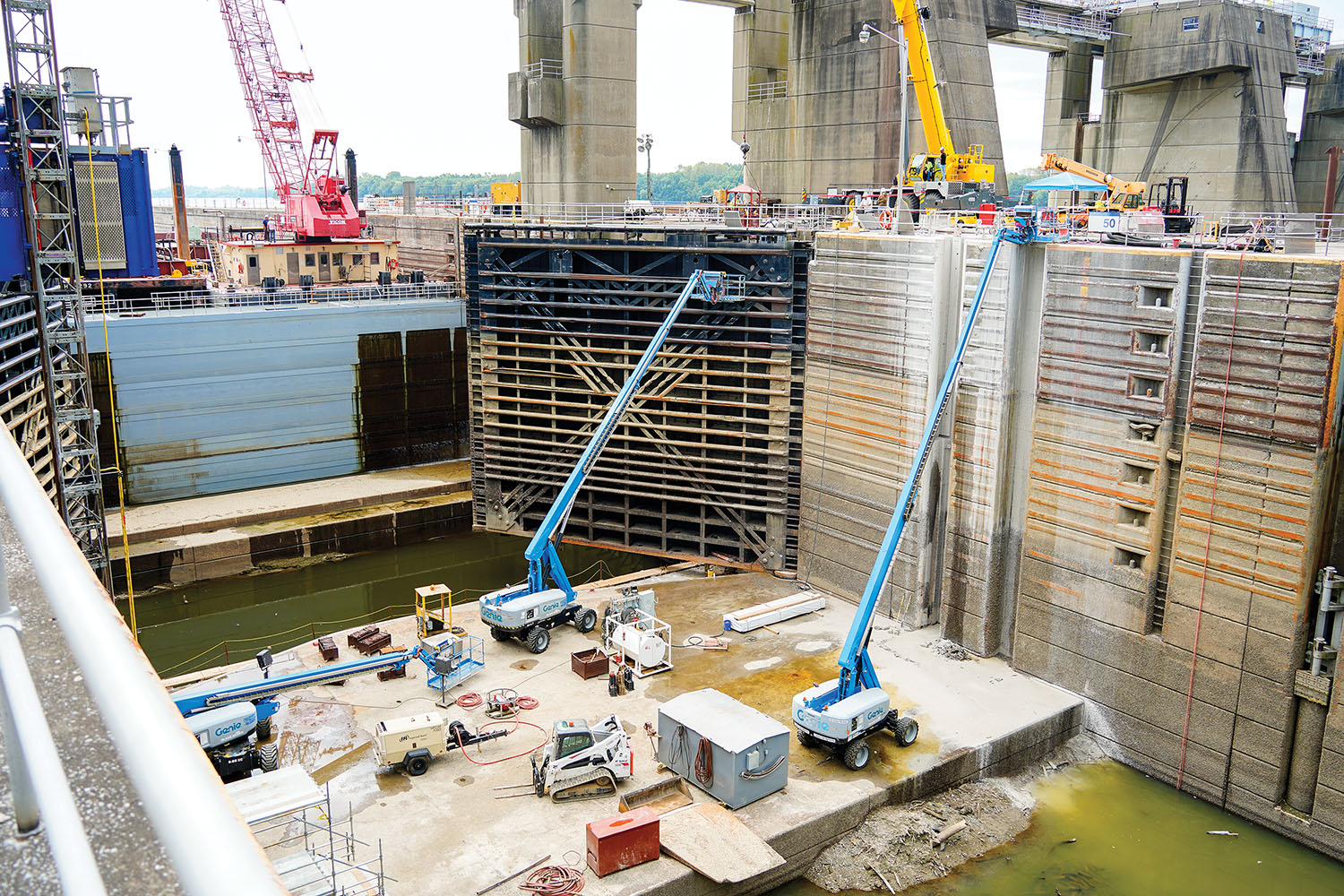A collaboration between the Louisville Engineer District and the Great Lakes and Ohio River Division’s Regional Rivers Repair Fleet (R3F) resulted in greatly accelerated miter gate repairs at the fifth busiest lock in the nation.
The $13.3 million project, initially scheduled for 18 weeks, was completed in 81 days at John T. Myers Locks and Dam, Ohio River Mile 846, Mount Vernon, Ind. The lock reopened to navigation November 9.
The main chamber had closed in mid-August.
“During the 2020 dewatering and multiple dive inspections, we found that the pintle casting nuts/bolts were in bad condition,” project engineer Travis McKim said. “The condition of these, along with the gates not being rehabbed since 2001 (lower end) and 2003 (upper end), led us to perform the miter gate rehabs.”
The project included repairing all four miter gate leaves in the primary chamber; replacing anchor arms, seals, pintle balls, bushings and all new casting bolts, contact blocks and five floating mooring bitt tracks in the primary chamber; and dewatering and inspecting the auxiliary chamber.
McKim explained that the miter gates pivot on pintle balls, which are similar to ball bearings. The pintles also support the gates. During the 2020 dewatering, crews found that the pintle casting bolts were corroded, he said.
The inspection gave the Corps time to plan for the rehab work, but scheduling needs meant it was going to hit during the busy harvest season, so McKim said the team did everything possible to finish the work quickly.
“We really did a good job, I felt like, in prepping and staging everything,” he said.
The team also conducted preparation drills and studied the lock’s historical needs to be better prepared. Toward the end of the work period, as queues stretched to up to 40 vessels waiting to lock through, crews worked two shifts of 12 hours each.
“It was really a full-on team effort to get everything together,” McKim said.
He added that the work is particularly notable when compared with a similar project completed in 2018 at Newburgh Locks and Dam, also on the Ohio River in Indiana. That work took 20 weeks to complete.
McKim said the work completed at John T. Myers Locks and Dam will also benefit other projects. Some of the methods used in completing the miter gate repairs may be useful in a dewatering at Smithland Locks and Dam, Ohio River Mile 918.5, in late summer.
“It is a similarly scoped project with a reduced schedule, so I’m hoping that we can optimize what we learned at J.T. Myers to make it successful at Smithland as well,” McKim said.
He added that he is proud that the work at John T. Myers was successfully completed.
“With it being my first dewatering, I was nervous and stressed to say the least,” he said. “After watching the first vessel lock through, I felt a major sense of accomplishment that will be hard to match,”
He added, “The project was a huge accomplishment for the whole team and a step in the right direction for the maintenance program.”
Caption for photo: The Great Lakes and Ohio River Division’s Regional Rivers Repair Fleet work to rehab the miter gates in the 1,200-foot lock chamber at John T. Myers Locks and Dam in September. (Photo by Abby Korfhage, Louisville Engineer District)




